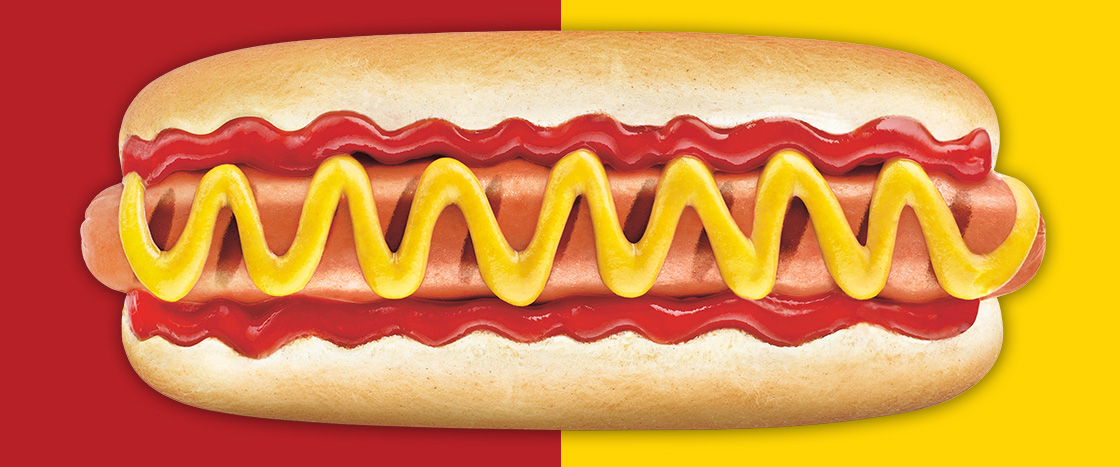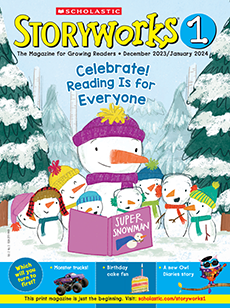People started making it long ago. It was made with fish guts!

Ketchup and Mustard
One is red, and one is yellow. You might see them at lunch today. But what do you know about . . .
Learning Objective: Students will practice comparing and contrasting by describing how ketchup and mustard are alike and different.
Squirt Some Ketchup
Long Ago
What Is in It?
tomatoes
Today it is made with tomatoes. They make it red. Other ingredients get mixed in too.
How Do We Eat It?
It is good on french fries. Some people put it on pizza or pasta. What do you put ketchup on?
Spread the Mustard
Long Ago
Mustard was made long ago. People ate it. They also put it on bug bites to stop the itch!
What Is in It?
It is made with seeds from the mustard plant. They can be yellow or brown. Other ingredients get added.
How Do We Eat It?
It is good on hot dogs. Some people put it on pretzels. What do you put mustard on?
More About the Article
English Language Arts Focus
Compare and contrast
Social Studies Focus
Food history
Implementation
- Whole group
Pairings and Text Connections
- In this issue: “Poetry Kit: My Lunch Box” (p. 32)
- From the Storyworks archive: “Alike and Different: The Truth Behind Chocolate and Vanilla” (February 2023), “Word Play: Ways to Say Yummy” (February 2023), “Poetry Kit: A Lot Dog” (February 2023)
- Suggested books: Tomatoes to Ketchup by Lisa M. Herrington; Hello, Hot Dog by Lily Murray
Before-Reading Resources
- Vocabulary slideshow (5 minutes) ingredients, seeds
- Video: Skill Power: Compare and Contrast (5 minutes) Help students understand how and why we compare and contrast with a fun how-to video.
Suggested Reading Focus
Compare and contrast (20 minutes)
- Tell students that they will be reading about two similar-but- different condiments, ketchup and mustard. Explain that a condiment is something people put on food to make it taste different. As they read, students should think about how ketchup and mustard are alike and different.
- Preview the parallel structure of the texts. What do children notice about the two pages? (They are set up similarly. Each section has a heading. All the headings are the same.)
- Read “Squirt Some Ketchup,” stopping at the end of each section to check comprehension. Do the same with “Spread the Mustard.“
- Next, read through the texts again. This time, read the sections under the matching headings back-to-back so students can focus on comparing and contrasting. Then discuss what they learned from the section.
- To finish, ask students to turn and talk to a partner to recall ways ketchup and mustard are alike and different. Have volunteers share their answers..
After-Reading Skills Practice
